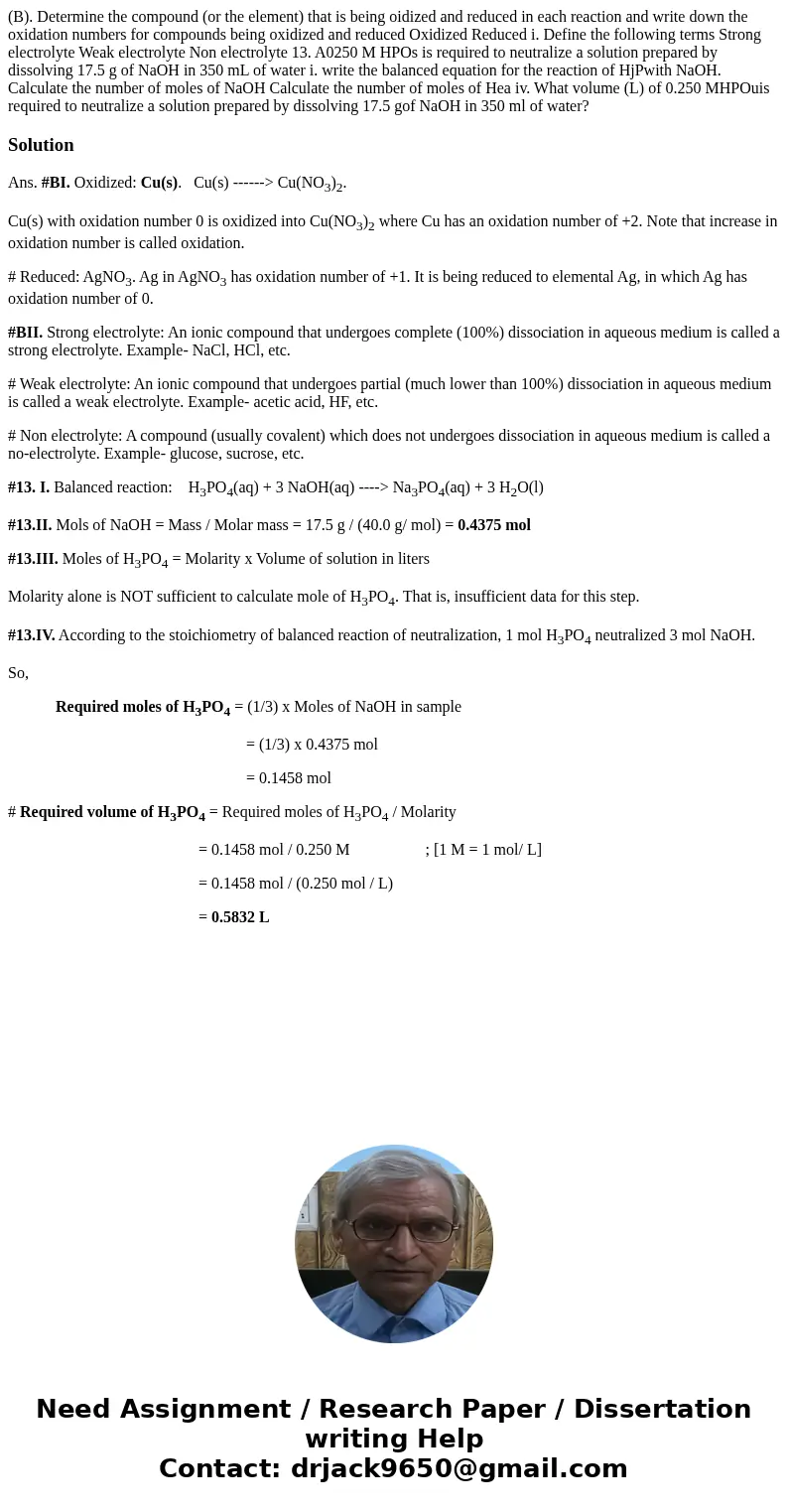B Determine the compound or the element that is being oidize
Solution
Ans. #BI. Oxidized: Cu(s). Cu(s) ------> Cu(NO3)2.
Cu(s) with oxidation number 0 is oxidized into Cu(NO3)2 where Cu has an oxidation number of +2. Note that increase in oxidation number is called oxidation.
# Reduced: AgNO3. Ag in AgNO3 has oxidation number of +1. It is being reduced to elemental Ag, in which Ag has oxidation number of 0.
#BII. Strong electrolyte: An ionic compound that undergoes complete (100%) dissociation in aqueous medium is called a strong electrolyte. Example- NaCl, HCl, etc.
# Weak electrolyte: An ionic compound that undergoes partial (much lower than 100%) dissociation in aqueous medium is called a weak electrolyte. Example- acetic acid, HF, etc.
# Non electrolyte: A compound (usually covalent) which does not undergoes dissociation in aqueous medium is called a no-electrolyte. Example- glucose, sucrose, etc.
#13. I. Balanced reaction: H3PO4(aq) + 3 NaOH(aq) ----> Na3PO4(aq) + 3 H2O(l)
#13.II. Mols of NaOH = Mass / Molar mass = 17.5 g / (40.0 g/ mol) = 0.4375 mol
#13.III. Moles of H3PO4 = Molarity x Volume of solution in liters
Molarity alone is NOT sufficient to calculate mole of H3PO4. That is, insufficient data for this step.
#13.IV. According to the stoichiometry of balanced reaction of neutralization, 1 mol H3PO4 neutralized 3 mol NaOH.
So,
Required moles of H3PO4 = (1/3) x Moles of NaOH in sample
= (1/3) x 0.4375 mol
= 0.1458 mol
# Required volume of H3PO4 = Required moles of H3PO4 / Molarity
= 0.1458 mol / 0.250 M ; [1 M = 1 mol/ L]
= 0.1458 mol / (0.250 mol / L)
= 0.5832 L

 Homework Sourse
Homework Sourse